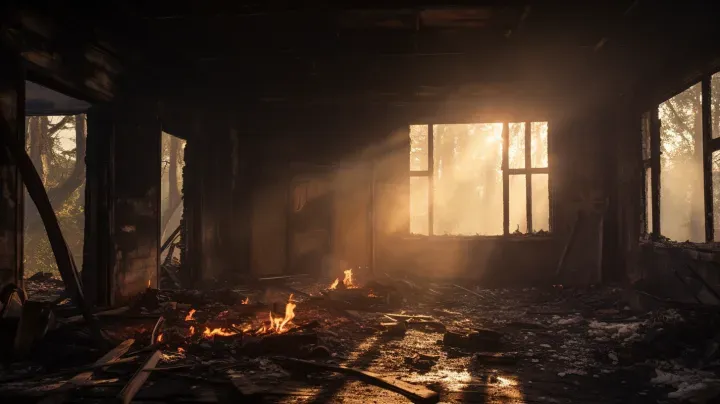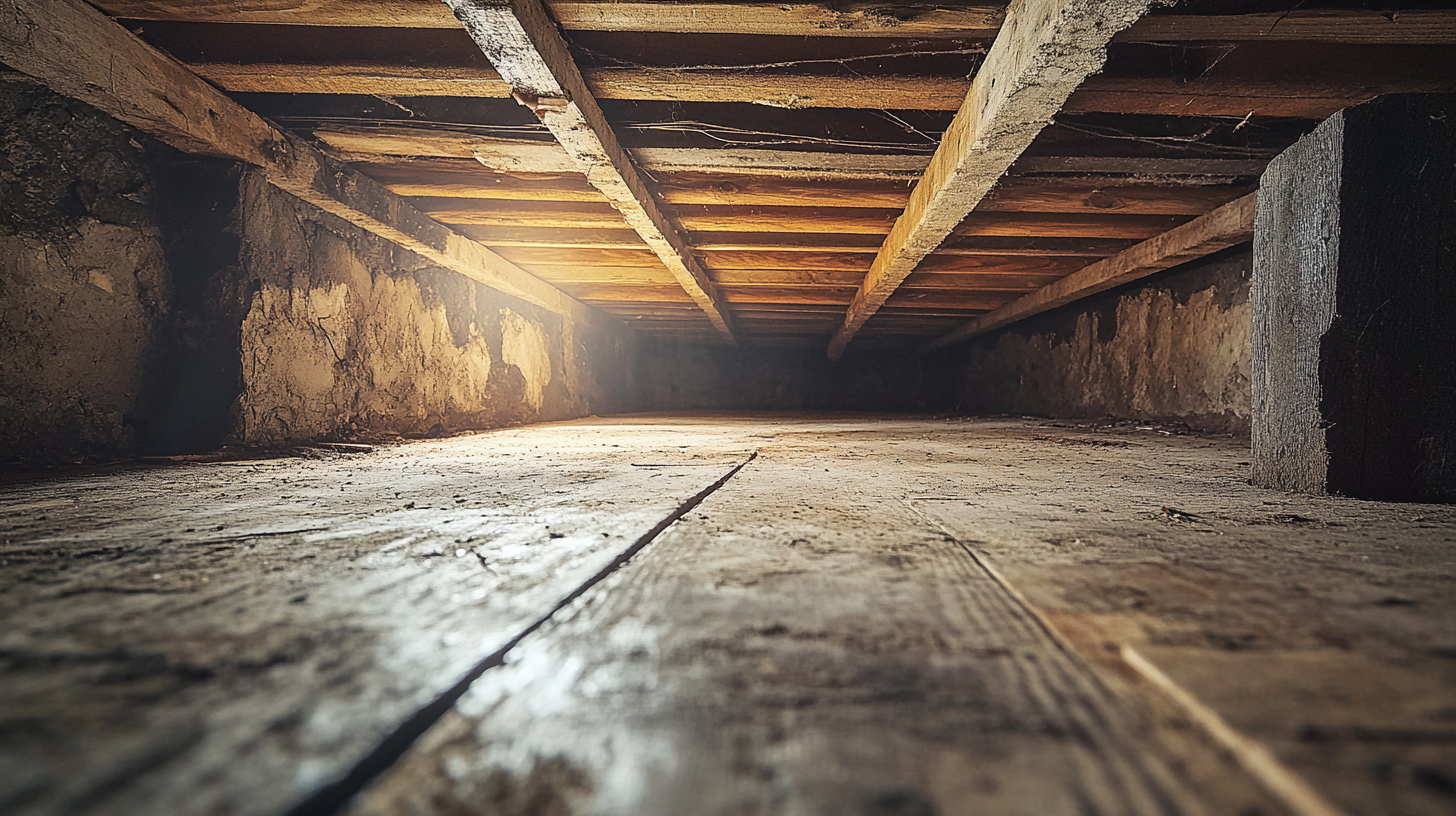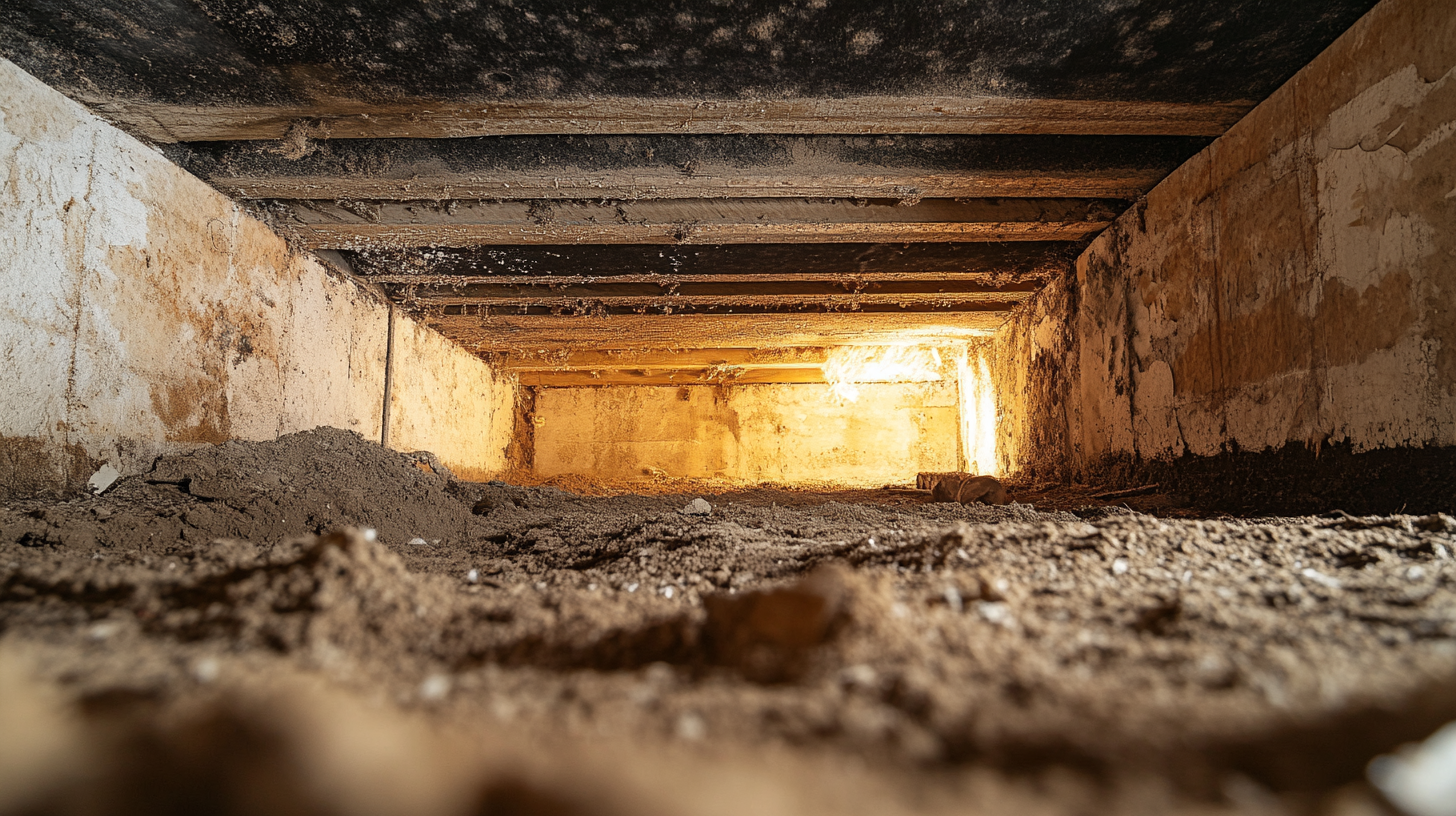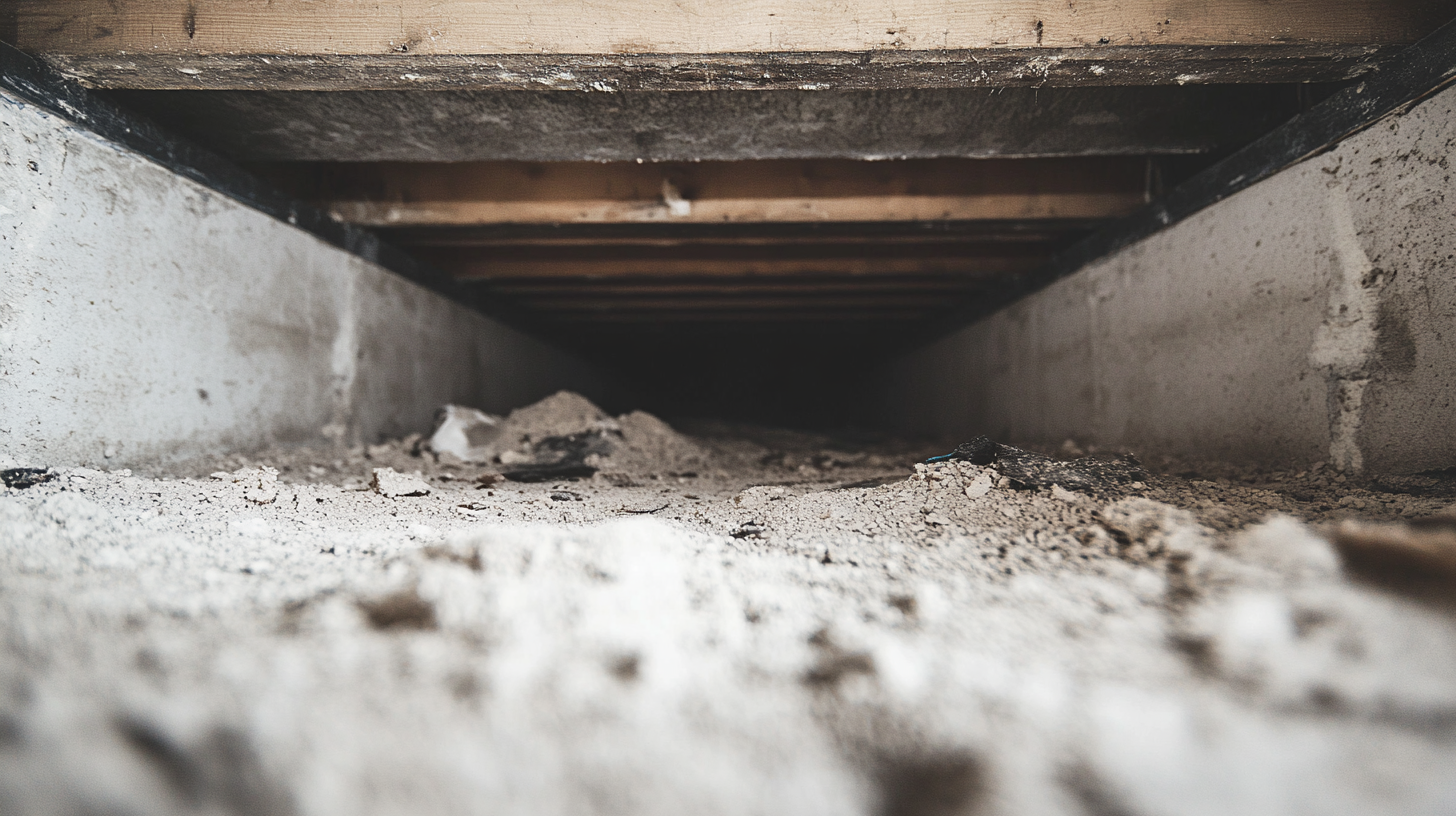Restoration Technologies for Smoke Damage

Smoke damage presents a complex array of challenges that extend far beyond the visible marks and odors it leaves behind. It's a pervasive problem that can infiltrate every nook and cranny of a property, causing not only surface damage but also potentially impacting the structural integrity and air quality. This blog aims to delve into the multifaceted challenges posed by smoke damage, exploring both the immediate and long-term effects it can have on homes, businesses, and personal well-being.
In recent years, the field of smoke damage restoration has seen significant advancements, driven by technological innovation and a deeper understanding of the science behind smoke damage. These developments are not just about addressing the damage more effectively; they're also about ensuring the health and safety of the occupants post-restoration.
We will introduce you to the latest technologies and methods that are revolutionizing the way professionals approach smoke damage restoration. From cutting-edge air purification systems and advanced soot removal techniques to innovative odor neutralization methods, the restoration industry is evolving to meet the challenges of smoke damage head-on. These advancements are making it possible to not only restore properties more efficiently but also to ensure that they are safe, clean, and habitable once again.
Join us as we explore the challenging world of smoke damage and the innovative solutions that are setting new standards in restoration practices. Whether you're a property owner, restoration professional, or just someone interested in the latest developments in property care, this blog will provide valuable insights into the modern approach to tackling smoke damage.
The Evolution of Smoke Damage Restoration
The field of smoke damage restoration has undergone significant evolution, transitioning from traditional methods to modern, technologically advanced techniques. This transformation has not only improved the efficiency of restoration processes but also enhanced their effectiveness in dealing with the complexities of smoke damage. This section compares traditional and modern restoration methods and discusses the importance of technology in effective restoration.
Traditional vs. Modern Methods
The approach to smoke damage restoration has seen a shift from conventional methods to more advanced techniques. Here’s a comparison:
Comparison of Traditional Restoration Techniques with Modern Technological Advancements:
- Traditional Methods: Historically, smoke damage restoration relied heavily on manual cleaning, basic deodorization techniques, and simple ventilation. These methods, while somewhat effective, often fell short in thoroughly removing residues and odors.
- Modern Methods: Modern restoration techniques incorporate advanced technologies such as thermal fogging, ozone treatment, hydroxyl generators, and ultrasonic cleaning. These technologies offer deeper cleaning and more effective odor neutralization.
- Efficiency and Thoroughness: Modern methods are not only more efficient, reducing the time required for restoration, but also more thorough, addressing both visible damage and microscopic particles that traditional methods might miss.
The Importance of Technology in Effective Restoration
The integration of technology into smoke damage restoration has revolutionized the process, making it more efficient and effective. Here’s a discussion on this aspect:
Discussion on How Technology Has Improved Efficiency and Effectiveness in Restoration:
- Advanced Air Purification: Technologies like HEPA air filtration and activated carbon filters have significantly improved the removal of airborne particles and odors, enhancing air quality post-restoration.
- Precision Cleaning: Ultrasonic cleaning technology uses high-frequency sound waves to clean items at a microscopic level, effectively removing soot and smoke residues from delicate items.
- Odor Neutralization: Techniques like ozone treatment and thermal fogging chemically neutralize smoke odors instead of merely masking them, leading to better long-term results.
- Moisture Detection and Mold Prevention: Modern restoration also involves the use of moisture detection tools to prevent mold growth, a common problem following water usage in firefighting efforts.
- Documentation and Analysis: Technological advancements have also improved the documentation and analysis of damage, aiding in more accurate insurance claims and ensuring comprehensive restoration.
The evolution of smoke damage restoration, marked by the adoption of advanced technologies, has transformed the way restoration professionals address the multifaceted challenges of smoke damage. This shift not only ensures more effective restoration but also contributes to the health and safety of the affected environments.
Cutting-Edge Technologies in Smoke Damage Restoration
The restoration industry has seen significant advancements in technology, particularly in addressing smoke damage. These cutting-edge technologies, including air scrubbing and filtration systems as well as ozone and hydroxyl generators, have revolutionized the way professionals tackle the challenges of smoke damage. This section introduces these technologies, explaining how they work and their benefits and safety considerations.
Air Scrubbing and Filtration Systems
Advanced air scrubbers and HEPA filtration systems are at the forefront of modern smoke damage restoration. Here’s how they contribute:
Introduction of Advanced Air Scrubbers and HEPA Filtration Systems:
- Air scrubbers and HEPA (High-Efficiency Particulate Air) filters are designed to clean and purify the air in environments affected by smoke damage.
- These systems are capable of trapping and removing particles as small as 0.3 microns, which includes most smoke particles and allergens.
How These Technologies Work to Remove Smoke Particles and Odors:
- Air Scrubbers: These devices work by drawing in polluted air, passing it through a series of filters to remove particles and contaminants, and then releasing the clean air back into the environment.
- HEPA Filters: HEPA filters in air scrubbers or HVAC systems capture fine particulate matter from smoke, effectively reducing the presence of harmful particles in the air.
- Odor Removal: In addition to particle removal, these systems often include activated carbon filters or similar technologies to absorb and neutralize odors from smoke.
Ozone and Hydroxyl Generators
Ozone and hydroxyl generators are powerful tools in neutralizing odors and purifying air. Here’s an explanation of their use:
Explanation of Ozone and Hydroxyl Treatments:
- Ozone Generators: These devices emit ozone (O3), a strong oxidizer that reacts with smoke molecules and odors, effectively neutralizing them. Ozone treatments are particularly effective in dealing with persistent smoke odors.
- Hydroxyl Generators: Hydroxyl generators produce hydroxyl radicals (OH), which are highly reactive molecules that break down smoke odors and volatile organic compounds (VOCs) at the molecular level.
Benefits and Safety Considerations of Using These Technologies:
- Benefits: Both ozone and hydroxyl treatments are known for their effectiveness in odor elimination and air purification, making them valuable in restoring air quality post-smoke damage.
- Safety Considerations: While effective, ozone generators should be used with caution as ozone can be harmful to breathe. It’s recommended to use these devices in unoccupied spaces and follow manufacturer guidelines. Hydroxyl generators, on the other hand, are generally safer and can be used in occupied spaces.
The integration of these cutting-edge technologies in smoke damage restoration represents a significant leap forward in the industry, offering more effective and efficient solutions to the challenges posed by smoke damage.
Chemical Sponges and Vapor Techniques
In this comprehensive section, we delve into the specialized world of chemical sponges and vapor techniques, two innovative methods widely used in cleaning and odor control. Our focus is on providing clear, expert-backed information that not only educates but also guides users in the practical application of these techniques.
Chemical Sponge Use in Soot Removal
Introduction: Begin with an overview of what chemical sponges are and their unique properties that make them suitable for soot removal. This sets the stage for readers to understand the context and relevance of the topic.
Detailed Guide on Usage: Offer a step-by-step guide on how to use chemical sponges for soot and residue removal. This should include:
- Preparation: Instructions on preparing the area and the sponge for use.
- Application Techniques: Best practices for applying the sponge to different surfaces to effectively remove soot without causing damage.
- Safety Measures: Highlight important safety tips to prevent any health hazards or further damage to surfaces.
- Expert Insights: Include insights from professionals who regularly use chemical sponges in their cleaning processes. This could be in the form of quotes, case studies, or expert opinions, adding credibility and depth to your content.
- Visuals and Demonstrations: Incorporate images or video tutorials showing the sponges in action. This not only makes the content more engaging but also helps
readers understand the process better.
Vapor Phase Odor Control
Introduction to Vapor Phase Technology: Start with a clear definition of what vapor phase technology is. Explain the science behind how it works in layman's terms to make it accessible to all readers.
Effectiveness in Odor Elimination: Discuss how vapor phase technology is effective in eliminating odors. This section should cover:
- Types of Odors Addressed: Describe the range of odors that this technology can tackle, from mild household odors to more potent industrial smells.
- Mechanism of Action: Explain how the technology neutralizes odors at a molecular level, providing a more thorough and lasting solution compared to traditional methods.
- Real-World Applications: Provide examples of where and how vapor phase technology is used in various settings (e.g., homes, industries, disaster recovery).
- Environmental and Health Considerations: Address any environmental impacts and health considerations associated with the use of vapor phase technology. This reinforces the trustworthiness and responsibility of the content.
Expert Opinions and Case Studies: Similar to the previous section, include expert views and real-life case studies to validate the claims made about the technology's effectiveness.
Thermal Fogging for Smoke Odor Neutralization
This section of our blog delves into the advanced technique of thermal fogging, a highly effective method used for neutralizing smoke odors. Our aim is to provide comprehensive, expert-validated information that not only educates our readers but also guides them in safely and effectively using this technology.
Principles of Thermal Fogging
Introduction: Start with an overview of thermal fogging, explaining what it is and why it's a preferred method for smoke odor neutralization. This introduction sets the context for the reader and highlights the relevance of the topic.
How Thermal Fogging Works: Break down the science behind thermal fogging in a way that is understandable to a general audience. This should include:
- The Process: Describe how thermal fogging creates a fine mist and how this mist interacts with smoke particles to neutralize odors.
- Chemical Composition: Discuss the types of chemicals used in thermal foggers and how they contribute to odor neutralization.
- Effectiveness: Explain why thermal fogging is effective against smoke odors, including its ability to penetrate porous surfaces where smoke particles can linger.
- Visual Aids: Use diagrams or videos to illustrate how thermal fogging works. Visual aids can make complex processes easier to understand and more engaging for the reader.
Safety and Best Practices
Safety Guidelines for Using Thermal Fogging: Safety is paramount when dealing with chemical fogging. Provide a detailed list of safety guidelines, including:
- Personal Protective Equipment (PPE): Outline the necessary PPE, such as masks, gloves, and goggles.
- Ventilation Requirements: Explain the importance of proper ventilation during and after fogging.
- Handling and Storage of Chemicals: Offer guidance on how to handle and store the chemicals used in thermal fogging safely.
Best Practices for Optimal Results: Share best practices to ensure that users get the most effective results from thermal fogging. This section should cover:
- Preparation: Steps to prepare the area before fogging, such as removing sensitive items or covering electronics.
- Application Techniques: Tips on how to apply the fog effectively, including how to move the fogger and how long to fog each area.
- Post-Fogging Procedures: Advice on what to do after fogging, such as airing out the area and cleaning residues.
Expert Opinions and Case Studies: Include insights from professionals who regularly use thermal fogging. This could be in the form of expert quotes, case studies, or interviews, adding credibility to your content.
Ultrasonic Cleaning for Smoke-Damaged Items
In this detailed section, we explore the innovative and effective method of ultrasonic cleaning, particularly focusing on its application in restoring smoke-damaged items. Our goal is to provide our readers with scientifically accurate, expert-backed information that not only educates but also assists them in understanding and utilizing this technology.
The Science Behind Ultrasonic Cleaning
Introduction: Begin with a brief overview of ultrasonic cleaning, highlighting its significance in the field of smoke damage restoration. This introduction should set the stage for the detailed explanation to follow.
Explanation of Ultrasonic Cleaning Technology: Dive into the mechanics of how ultrasonic cleaning works, including:
- Ultrasonic Waves: Describe how these high-frequency sound waves create microscopic bubbles in the cleaning solution through a process known as cavitation.
- Cleaning Process: Explain how these bubbles implode with great energy, effectively dislodging smoke residues and particles from items.
- Effectiveness: Discuss why ultrasonic cleaning is particularly effective for smoke-damaged items, emphasizing its ability to clean intricate and hard-to-reach areas.
- Visual Aids and Demonstrations: Incorporate diagrams, animations, or video demonstrations to visually explain the process. This can help in making complex scientific concepts more accessible to a general audience.
Types of Items Suitable for Ultrasonic Cleaning
Range of Items That Can Be Effectively Cleaned: Provide a comprehensive list of items typically restored using ultrasonic cleaning, such as:
- Electronics: Detail how certain electronic devices can be cleaned ultrasonically, provided they are appropriately prepared and handled.
- Jewelry and Watches: Explain the effectiveness of ultrasonic cleaning in restoring delicate items like jewelry.
- Household Items: Include various household items like glasses, dishes, and ornaments.
Limitations and Considerations: It's crucial to also discuss the limitations of ultrasonic cleaning, such as:
- Material Sensitivity: Highlight which materials are not suitable for ultrasonic cleaning, like certain plastics or soft stones in jewelry.
- Size Limitations: Discuss any size constraints of items that can be cleaned, based on the capacity of ultrasonic cleaning tanks.
- Pre-Cleaning Requirements: Mention if certain items require pre-cleaning or disassembly before undergoing ultrasonic cleaning.
Expert Opinions and Case Studies: To add credibility, include insights from professionals who specialize in ultrasonic cleaning for smoke-damaged items. Case studies or real-life examples can provide practical insights into the process and its effectiveness.
FAQs
Contact Fast Response Cleaning & Restoration Today!
Fast Response Cleaning & Restoration will do everything we can to ensure your experience with us is excellent.
Request A FREE Estimate
Request A FREE Estimate Form
CHECKOUT RECENT POST



Have an Emergency? We're Here to Help!
When it comes to disaster cleanup, we are a seasoned veteran in the industry and have helped hundreds of property owners just like you.
Our disaster recovery teams are available 24-7 to quickly clean up and repair disasters of all types.
